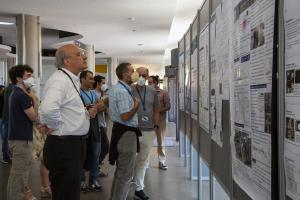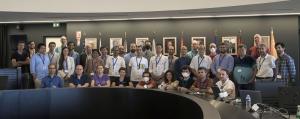Second IAEA Technical Meeting held at ITER
Last week, at the 2nd International Atomic Energy Agency (IAEA) Technical Meeting on disruptions hosted at ITER, the IAEA and the ITER Organization welcomed more than 90 experts in the field. While the first meeting in this series in 2020 had to be held by videoconference, this time more than 35 experts took the opportunity to meet in person at ITER, enjoying live discussions during the oral sessions and in front of the posters on display in the entrance hall of ITER Headquarters. They were also, many for the first time, able to see the spectacular progress on the ITER construction site during specially arranged tours guided by members of the ITER Science Division.
- Heat and electromagnetic loads as well as high energetic runaway electrons
- Disruption prediction to avoid or mitigate these events
- Physics and technology for load mitigation
The dense 3.5-day program included 32 oral presentations (of which 7 were invited), 19 poster presentations, and free discussion sessions. Developments for disruption mitigation in ITER had a prominent place in the agenda, including a special session on technology developments relevant for the ITER disruption mitigation system, which is rapidly heading towards its final design stage to ensure readiness for the first ITER operational campaigns beyond first plasma demonstration.



